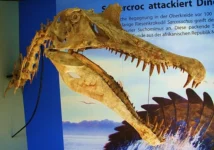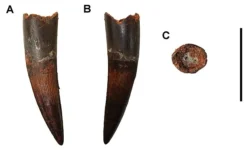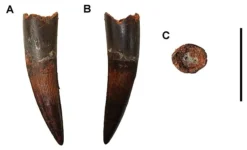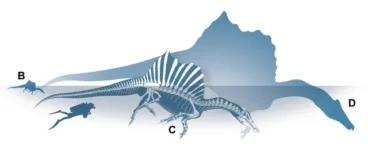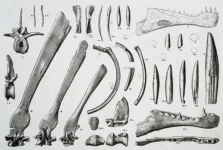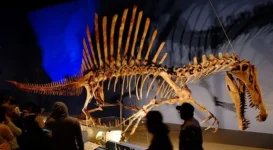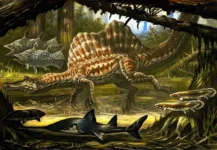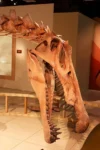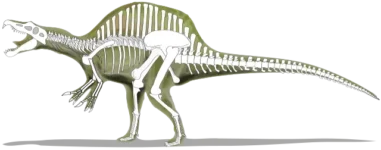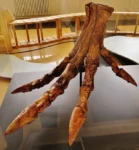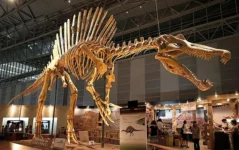Spinosaurus
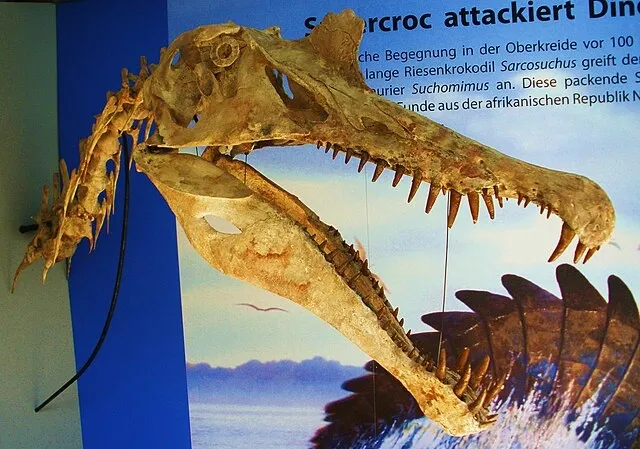
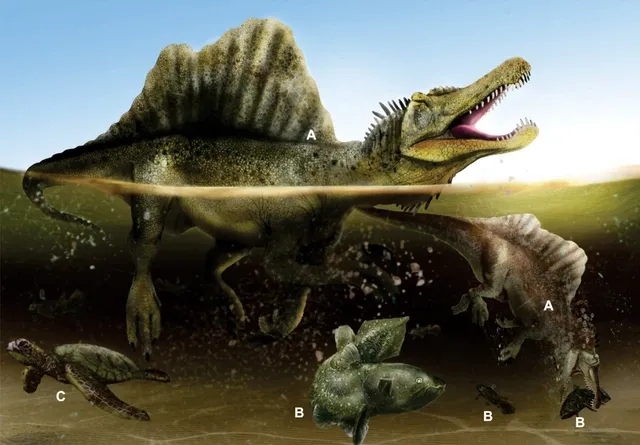
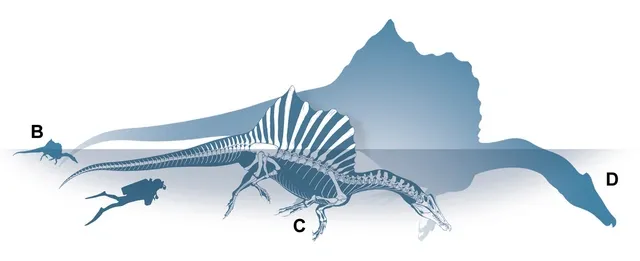
SPINOSAURUS:
Spinosaurus was a massive theropod dinosaur that lived during the Cretaceous period, approximately 112 to 93 million years ago. It is distinguished by its sail-like structure formed by elongated neural spines on its back, which could reach over 1.5 meters (5 feet) in height. This feature likely served multiple purposes, possibly including thermoregulation, display, or even as a means to increase its visibility while in water. Spinosaurus is known for its robust, crocodile-like skull and conical teeth adapted for catching fish, indicating it was well-suited to an aquatic lifestyle, possibly spending a significant portion of its time in water hunting aquatic prey. Fossils discovered in North Africa, particularly in Egypt and Morocco, have provided crucial insights into its anatomy and ecological adaptations.
SIZE AND APPEARANCE:
Spinosaurus was one of the largest known carnivorous dinosaurs, possibly reaching lengths of up to 15 meters (49 feet) and weights of around 7 to 9 tonnes (7.7 to 9.9 tons). Its most distinctive feature was a series of large neural spines that extended along its back, forming a sail-like structure. These spines could reach heights of over 1.5 meters (5 feet) in some specimens.
ANATOMY AND ADAPTATIONS:
Spinosaurus had adaptations that suggest it was well-adapted to a semi-aquatic lifestyle. Its elongated jaws housed conical teeth suitable for catching fish, indicating it likely primarily fed on aquatic prey. Its strong, clawed forelimbs and robust hind limbs further support its ability to move and hunt in aquatic environments.
HABITAT AND DISCOVERY:
Spinosaurus lived during the Cretaceous period, approximately 112 to 93 million years ago. Fossils have been found in North Africa, specifically in Egypt and Morocco. The first partial skeleton of Spinosaurus was discovered in Egypt in 1912 by German paleontologist Ernst Stromer.
BEHAVIOR AND HUNTING:
Spinosaurus is believed to have spent a significant amount of time in water, perhaps using its sail for thermoregulation or display. Its large, crocodile-like skull and strong jaws allowed it to capture and consume large fish and possibly other aquatic creatures.
CONTROVERSIES AND RECONSTRUCTION:
The exact appearance and lifestyle of Spinosaurus have been subjects of debate among paleontologists. Recent discoveries and research, including new fossil finds and biomechanical studies, continue to refine our understanding of this enigmatic dinosaur.
FUN FACTS:
1. Spinosaurus is believed to have been well-adapted to an aquatic lifestyle, with anatomical features suggesting it spent a considerable amount of time in water, possibly hunting fish and other aquatic prey. Its large, elongated jaws and conical teeth are specialized for catching slippery fish.
2. Spinosaurus is one of the largest known carnivorous dinosaurs, rivaling Tyrannosaurus rex in size. It could reach lengths of up to 15 meters (49 feet) and weights of around 7 to 9 tonnes (7.7 to 9.9 tons), making it larger than most theropods.
3. The sail-like structure on its back, formed by tall neural spines, remains a distinctive feature of Spinosaurus. These spines were likely covered by skin and may have been used for thermoregulation, display, or even to stabilize itself while swimming.
4. Unlike many other large theropods that primarily hunted terrestrial prey, Spinosaurus is thought to have primarily fed on fish and other aquatic animals. This dietary specialization sets it apart from its more terrestrial relatives.
